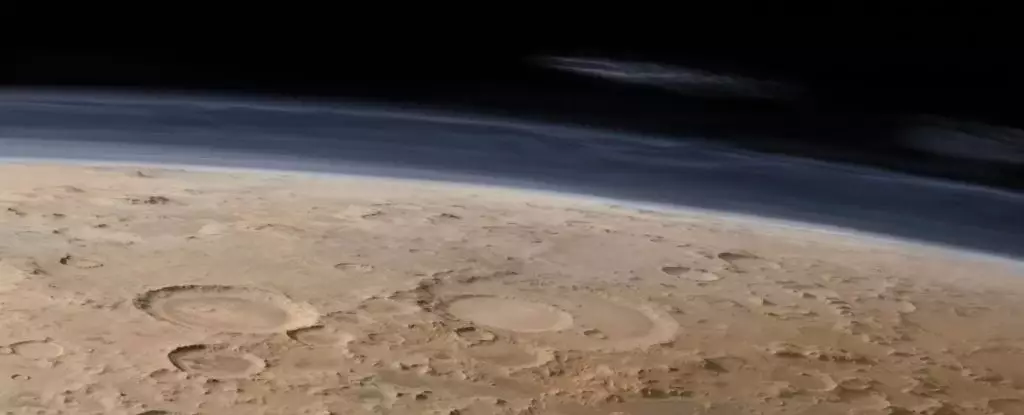The mysteries of Mars, often depicted as a desolate and lifeless world, are far more intricate than they appear. Recent developments have illuminated a critical aspect of the planet’s atmospheric decline, showcasing the impressive efforts of scientists who have spent over nine years analyzing satellite data. Led by planetary scientist Shannon Curry from the University of Colorado Boulder, this team has made strides in understanding atmospheric sputtering, a process instrumental in the Martian atmospheric erosion. Their research not only sheds light on Mars’ atmospheric history but also provokes deeper questions about the planet’s potential for harboring life.
Understanding Atmospheric Sputtering
Atmospheric sputtering is a phenomenon that occurs when energetic particles collide with an atmosphere that lacks a global magnetic shield—such as Mars. This process is akin to the impact of a meteorite, where the energy transfer results in the ejection of atmospheric constituents into space. As solar wind ions strike Mars’ upper atmosphere, they provide enough kinetic energy to atmospheric molecules, enabling some to reach escape velocity and escape the planet’s gravitational grip.
This fundamental mechanism not only enhances our understanding of atmospheric dynamics but also serves as a window into Mars’ early environments when the Sun was markedly more intense and volatile. The implications of this discovery are vast; they provide vital insights into how the atmospheric conditions on Mars evolved and deteriorated over time, ultimately shaping the planet’s capacity to support life.
The Data Behind the Breakthrough
The research team’s success hinged on the capability of NASA’s MAVEN (Mars Atmosphere and Volatile Evolution) spacecraft, which has been diligently monitoring Mars since its arrival in 2014. This spacecraft was uniquely equipped to capture the necessary data for a thorough investigation of atmospheric interactions with solar wind.
By meticulously analyzing the data, the researchers detected variations in argon density at altitudes above 350 kilometers, establishing a relationship between these variations and the orientation of the solar wind’s electric field. Interestingly, the lighter isotopes of argon showed significant fluctuations, indicating a loss of material consistent with the sputtering process. Such observations were robustly supported by a solar storm incident in January 2016, which amplified the evidence of sputtering.
Implications for Mars and Beyond
The findings of this study not only challenge previous assumptions about the scale of atmospheric loss on Mars but also emphasize the dynamic nature of its atmospheric processes. The researchers discovered that current rates of atmospheric sputtering are more than four times higher than what was previously anticipated. This revelation indicates that environmental conditions on Mars are more tumultuous than once believed, potentially offering a glimpse into a Martian past characterized by intense solar activity.
Understanding these processes on Mars could also inform our knowledge of exoplanets orbiting different stars. If sputtering is a common phenomenon in atmospheres lacking protective magnetic fields, then perhaps many other worlds face similar existential challenges. As scientists seek to probe other celestial bodies, the lessons learned from Mars become increasingly relevant for the hunt for extraterrestrial life.
A New Perspective on Habitability
The consequences of atmospheric sputtering extend far beyond mere data points; they compel us to reconsider the habitability of Mars throughout its geological history. As scientists piece together the intricate puzzle of Mars’ climate and atmospheric evolution, they confront a reality where the planet may have once held conditions favorable for life. This reflection can simultaneously fuel hopes of future Mars exploration, igniting the imagination regarding the prospect of colonization or, at the very least, ongoing research that could lead to remarkable discoveries.
Indeed, each piece of research like this one contributes not only to our understanding of Mars but also to our position on Earth in the cosmic landscape. The conditions that shape our neighboring planets may offer invaluable lessons about our own planetary history and future. As we venture further into the age of exploration, both in our solar system and beyond, studying a seemingly barren Mars poses profound implications for our understanding of life’s potential across the universe.


Leave a Reply